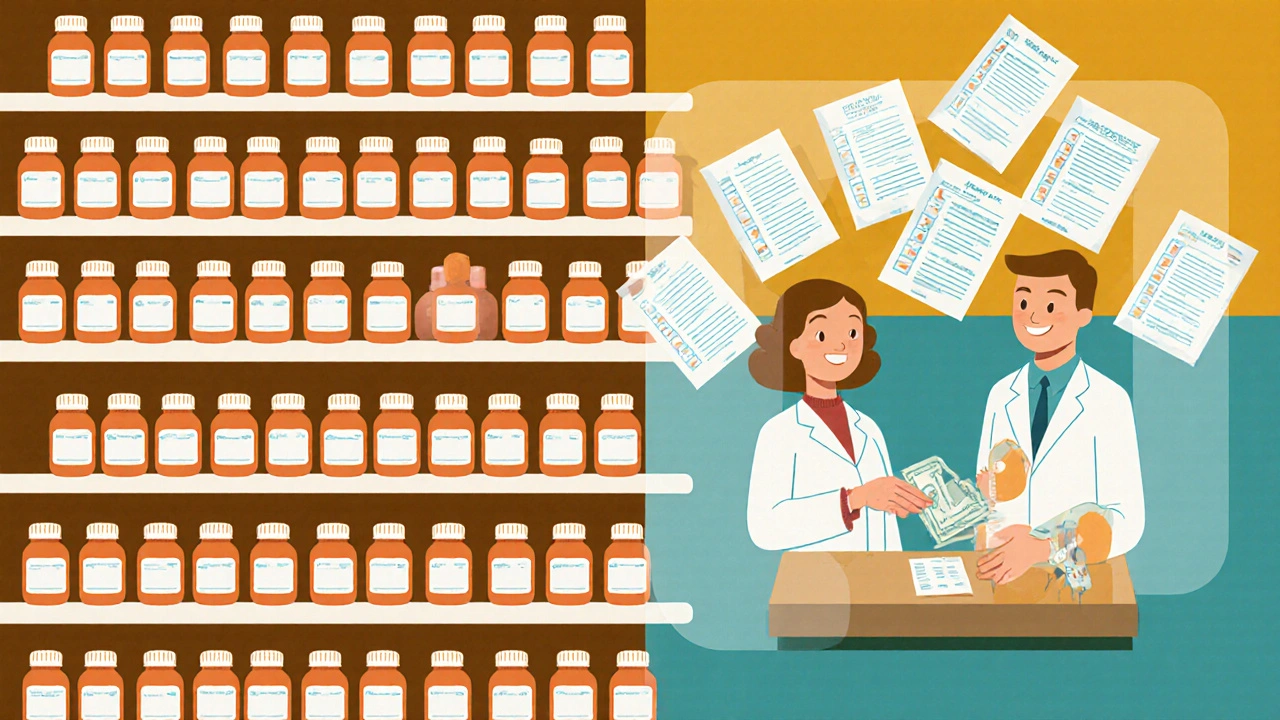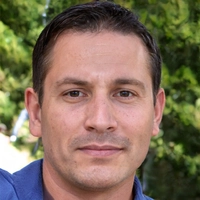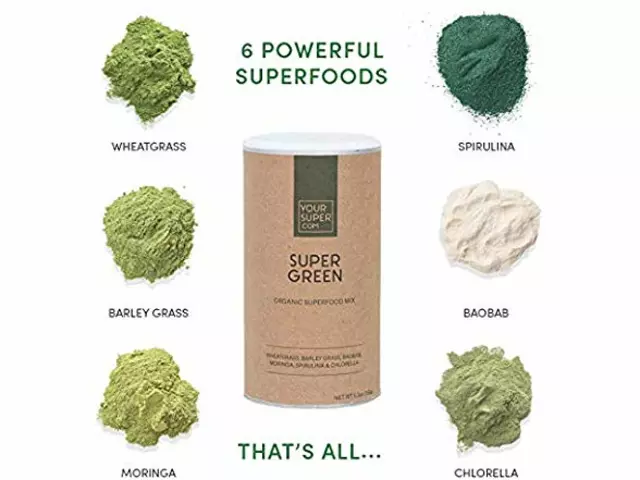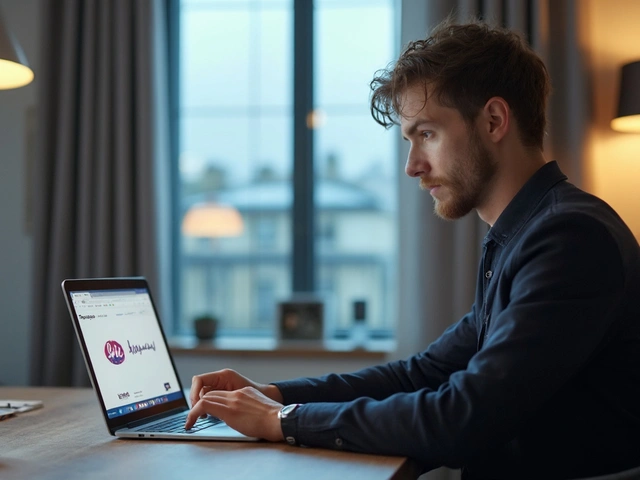The U.S. Food and Drug Administration doesn’t just approve brand-name drugs. In fact, generic drugs make up more than 90% of all prescriptions filled in the United States. Behind this massive system is a specialized unit within the FDA called the Office of Generic Drugs (OGD). This office doesn’t just process paperwork-it’s the engine that keeps affordable, safe, and effective generic medicines flowing to pharmacies across the country.
What Is the Office of Generic Drugs?
The Office of Generic Drugs (OGD) is a division inside the Center for Drug Evaluation and Research (CDER), the part of the FDA responsible for reviewing all prescription drugs. OGD was officially elevated to a "super office" in December 2013, giving it direct reporting authority to the CDER director. This wasn’t just a name change-it was a structural upgrade to handle the growing complexity and volume of generic drug applications. Before 2013, generic drug reviews were scattered across different teams. After the reorganization, OGD became a centralized hub with its own leadership, budget, and project management systems. Its mission is clear: ensure high-quality, affordable generic drugs are available to the American public by setting and enforcing standards for safety, effectiveness, and quality.How OGD Makes Generic Drugs Approved
The main tool OGD uses is the Abbreviated New Drug Application, or ANDA. Unlike brand-name drug applications, which require full clinical trials, ANDAs rely on the fact that the generic version contains the same active ingredient as the original. But that doesn’t mean the review is simple. OGD must prove the generic drug is bioequivalent-meaning it behaves the same way in the body as the brand-name version. This involves reviewing data on how the drug is absorbed, how long it stays in the bloodstream, and how it’s broken down. A single mistake here could mean a patient gets too much or too little of the medicine. Regulatory Project Managers (RPMs) oversee each ANDA review. These are not clerks-they’re seasoned scientists and pharmacists who track every step of the process. They make sure reviews meet the deadlines set by the Generic Drug User Fee Amendments (GDUFA), a program where generic drug makers pay fees to fund the FDA’s review work. In 2025, GDUFA III is in effect, with targets like 10-month reviews for most applications.OGD’s Five Sub-Offices and What They Do
OGD isn’t one big team. It’s made up of five specialized sub-offices, each with a clear function:- Immediate Office (IO): The nerve center. It provides leadership, coordinates strategy, and handles legal and policy advice. It includes the Global Generic Drug Affairs Team, which works with regulators in Europe, Canada, and India to align standards and avoid delays.
- Office of Bioequivalence (OB): This team decides what data proves two drugs are the same in the body. They design bioequivalence studies, set acceptance criteria, and manage the Clinical Review Division, which also monitors drug safety after approval.
- Office of Generic Drug Policy: This is where the Hatch-Waxman Act comes to life. They interpret patent rules, determine exclusivity periods, and resolve disputes between brand and generic manufacturers. For example, if a brand company claims a patent covers a drug, OGD must decide if that patent blocks a generic from entering the market.
- Office of Regulatory Operations (ORO): The logistics hub. They handle filing reviews, labeling approvals, and quality management. Their Division of Project Management assigns ANDAs to reviewers and tracks progress to hit GDUFA deadlines.
- Office of Research and Standards (ORS): This team develops the science behind the rules. They study how drug formulations affect absorption, create new testing methods, and model how changes in manufacturing impact safety.

The Hatch-Waxman Act and GDUFA: The Rules of the Game
You can’t understand OGD without understanding two laws: the Hatch-Waxman Act and GDUFA. The Hatch-Waxman Act of 1984 created the modern generic drug system. It allowed generic companies to file ANDAs without repeating expensive clinical trials, as long as they proved bioequivalence. In return, brand companies got extended patent terms to make up for time lost during FDA review. This balance kept innovation alive while opening the door to cheaper drugs. GDUFA, launched in 2012, added funding. Generic manufacturers now pay fees to the FDA to cover the cost of reviewing their applications. In return, the FDA commits to review timelines. GDUFA III, active since 2023, includes new goals like faster reviews for first generics and drugs in shortage. The Division of Legal and Regulatory Support (DLRS) inside OGD is the go-to team for Hatch-Waxman questions. They track patent certifications, exclusivity claims, and legal challenges. One wrong decision can delay a generic drug for years-or block it entirely.How OGD Ensures Safety After Approval
Approval isn’t the end. OGD works with CDER’s Center for Drug Safety to monitor adverse events linked to generic drugs. If patients report side effects, OGD investigates whether the issue is with the drug itself or the manufacturing process. They also handle Risk Evaluation and Mitigation Strategies (REMS)-safety plans required for certain drugs. If a brand drug has a REMS, the generic version must follow the same rules. OGD ensures these plans are practical and don’t block access. The OGD Safety and Surveillance Team, part of the Office of Bioequivalence, reviews reports from doctors, pharmacists, and patients. They’ve flagged issues like inconsistent tablet dissolution in generics, leading to recalls and reformulations.
Why OGD Matters to You
If you’ve ever filled a prescription for a generic drug and paid $4 instead of $400, you’ve seen OGD’s impact. In 2024, generic drugs saved the U.S. healthcare system over $370 billion. That’s money back in patients’ pockets and less strain on insurers. OGD also helps during drug shortages. When a brand-name drug runs out, OGD fast-tracks the first generic version. In 2023, they approved 17 priority generics for drugs in shortage-including insulin, antibiotics, and chemotherapy agents. They don’t just approve drugs-they build trust. People assume generics are safe. OGD makes sure that assumption is backed by science, not luck.Global Influence and Future Challenges
OGD doesn’t work in isolation. Through its Global Generic Drug Affairs Team, it collaborates with regulators in Canada, the EU, Japan, and India. Many generic drugs sold in the U.S. are made overseas. OGD inspects foreign manufacturing sites and helps harmonize standards so drugs approved in one country meet U.S. requirements. The biggest challenge ahead? Complexity. New drug forms-like extended-release tablets, injectables, and combination products-are harder to replicate. OGD is investing in new testing technologies and artificial intelligence to keep up. They’re also tackling "authorized generics"-when brand companies sell their own drug under a generic label. These blur the lines between brand and generic, and OGD is developing new policies to ensure transparency.What Happens After OGD Approves a Generic?
Once OGD approves an ANDA, the drug can be manufactured and sold. But approval doesn’t mean instant availability. Manufacturers must still pass inspections, secure distribution deals, and get pricing approved by pharmacies and insurers. OGD doesn’t control pricing, but it does track market competition. If only one generic is available, OGD encourages more applicants to enter the market. More competition means lower prices. In 2025, OGD approved over 1,200 generic drugs. That’s about 3.5 per day, every day. Behind each one is a team of scientists, pharmacists, and lawyers working to make sure it’s safe, effective, and ready for your medicine cabinet.What is the difference between a brand-name drug and a generic drug?
A brand-name drug is the original version developed by a pharmaceutical company. A generic drug has the same active ingredient, strength, dosage form, and route of administration. It must be bioequivalent-meaning it works the same way in the body. Generics are typically cheaper because they don’t repeat costly clinical trials. The FDA requires that generics meet the same quality and safety standards as brand-name drugs.
How long does it take for OGD to approve a generic drug?
Under GDUFA III, most standard Abbreviated New Drug Applications (ANDAs) are reviewed within 10 months. Priority applications-like first generics or drugs in shortage-are reviewed faster, often within 6 to 8 months. Timelines can extend if the application is incomplete or if the FDA requests additional data.
Are generic drugs as safe as brand-name drugs?
Yes. The FDA requires that generic drugs meet the same strict standards for quality, purity, strength, and stability as brand-name drugs. All manufacturing facilities, whether in the U.S. or abroad, must pass inspections. OGD also monitors post-market safety reports and can recall a generic drug if issues arise.
What is bioequivalence, and why does it matter?
Bioequivalence means two drugs deliver the same amount of active ingredient into the bloodstream at the same rate. OGD uses clinical studies to prove this. If a generic isn’t bioequivalent, it could cause underdosing or overdosing-leading to treatment failure or side effects. This is why generics aren’t just copies; they’re scientifically tested equivalents.
Can a generic drug be approved before the brand-name drug’s patent expires?
Yes, but only under specific conditions. Under the Hatch-Waxman Act, a generic company can file an ANDA before the patent expires if they certify that the patent is invalid, unenforceable, or won’t be infringed. This often leads to legal challenges, but if the generic wins, it can enter the market early. The first generic to file may get 180 days of market exclusivity.
Does OGD inspect manufacturing plants?
Yes. OGD works with the FDA’s Office of Regulatory Affairs to inspect manufacturing sites worldwide. About 40% of generic drug manufacturing happens outside the U.S., including in India and China. OGD prioritizes inspections based on risk and past compliance history. Plants must meet U.S. Good Manufacturing Practice (GMP) standards to supply the American market.
What happens if a generic drug causes side effects?
Patients and doctors report side effects to the FDA’s MedWatch system. OGD’s Safety and Surveillance Team reviews these reports. If a pattern emerges-like inconsistent dissolution or contamination-the team can request additional testing, issue a warning, or initiate a recall. OGD also works with manufacturers to fix the problem before more patients are affected.
How does OGD handle drug shortages?
OGD identifies drugs in shortage and gives them priority review status. They work with manufacturers to expedite applications for generics that can replace the shortage drug. In 2023, OGD approved 17 priority generics for drugs like insulin, antibiotics, and chemotherapy agents. They also communicate with the public and healthcare providers to manage expectations during shortages.
If you’ve ever saved money on a prescription, you’ve benefited from the work of OGD. It’s not flashy, but without it, millions of Americans couldn’t afford the medicines they need. The office doesn’t just approve drugs-it protects public health, one generic pill at a time.







Frank Dahlmeyer
20 November 2025 - 14:51 PM
Let me tell you something-this whole OGD system is one of the most underappreciated miracles in American healthcare. I mean, think about it: 90% of prescriptions? That’s not just a statistic, that’s your grandma’s blood pressure med, your kid’s antibiotics, your uncle’s insulin-all priced like they’re from a bulk warehouse instead of a lab with billion-dollar R&D budgets. And behind every single one of those pills? A team of scientists, regulators, and project managers who don’t get headlines but keep the whole damn machine running. The bioequivalence standards alone? That’s not just science-it’s art. They’re not just matching chemical formulas; they’re matching how your body absorbs it, how it dissolves, how it behaves over time. One milligram off, one particle size wrong, and you’re not getting the same effect. And yet, somehow, they get it right 99.9% of the time. No wonder generics are trusted globally. This isn’t bureaucracy. This is public health engineering at its finest.
Reema Al-Zaheri
22 November 2025 - 11:31 AM
The Office of Generic Drugs operates under a meticulously structured regulatory framework, which is grounded in the Hatch-Waxman Act of 1984, and further refined by the Generic Drug User Fee Amendments (GDUFA) I, II, and III. Each sub-office-Immediate Office, Office of Bioequivalence, Office of Generic Drug Policy, Office of Regulatory Operations, and Office of Research and Standards-fulfills a discrete, non-overlapping function, ensuring that scientific rigor, legal compliance, operational efficiency, and post-market surveillance are all independently and systematically addressed. The bioequivalence criteria, defined by 90% confidence intervals for Cmax and AUC within 80–125%, are not arbitrary; they are statistically validated thresholds derived from decades of pharmacokinetic research. Furthermore, the inspection protocols for foreign manufacturing facilities adhere to Current Good Manufacturing Practices (cGMP), as codified in 21 CFR Parts 210 and 211. This system, though complex, is transparent, science-based, and legally defensible.
Derron Vanderpoel
24 November 2025 - 11:00 AM
okay so i just read this whole thing and i’m not crying but i’m also not not crying?? like… i’ve been taking generics my whole life and never once thought about who’s actually making sure they don’t kill me. i thought it was just… some guy in a lab coat shrugging and saying ‘eh, close enough.’ but no. no no no. there’s a whole team of PhDs and pharmacists and lawyers and project managers tracking every single pill like it’s a ticking bomb. and they’re doing it under deadlines. and they’re doing it while foreign plants get inspected. and they’re doing it so my $4 metformin doesn’t turn into a $400 nightmare. i just… thank you. whoever you are. you’re the quiet heroes.
Timothy Reed
24 November 2025 - 17:16 PM
This is an excellent and thoroughly detailed breakdown of the Office of Generic Drugs. The structural clarity provided-especially regarding the five sub-offices and their distinct responsibilities-offers a rare glimpse into the operational backbone of pharmaceutical accessibility. The integration of GDUFA funding mechanisms with enforceable review timelines demonstrates a pragmatic balance between regulatory necessity and industry accountability. Importantly, the emphasis on post-market surveillance and REMS alignment ensures that safety is not an afterthought but a continuous commitment. This model deserves wider recognition, not only in policy circles but among the general public who benefit from it daily.
Christopher K
25 November 2025 - 12:32 PM
Oh wow. So we’re paying foreign factories in India and China to make our life-saving drugs, and then we pay the FDA to check if they didn’t accidentally put rat poison in them? And this is the ‘American healthcare system’? What a joke. We outsource the manufacturing, outsource the quality control, and then pat ourselves on the back for ‘saving money.’ Meanwhile, real American pharmacists are getting laid off because generics are ‘cheaper.’ You call this progress? I call it surrender. And don’t even get me started on how the FDA’s ‘global harmonization’ is just letting other countries set the rules while we play catch-up. This isn’t innovation-it’s outsourcing with a fancy acronym.
harenee hanapi
25 November 2025 - 19:53 PM
Can we just talk about how unfair this is? I mean, I’ve been on the same generic for years, and last month my bottle looked different-smaller pills, different color-and I panicked because I thought it wasn’t the same. And then I found out it was still approved? But what if it wasn’t? What if I had a bad reaction? And nobody told me! The FDA says it’s ‘bioequivalent,’ but how do I know? Who even checks the real people? I’m not a scientist. I just need to not die. And now I hear they’re using AI to approve drugs? Are we just letting algorithms decide if my medicine will kill me? This isn’t science-it’s a gamble, and I’m the one betting my life on it. And nobody even asks me if I’m okay with that.
Andy Feltus
27 November 2025 - 19:12 PM
There’s a quiet philosophical irony here: we treat generic drugs like commodities, but the system that makes them possible is one of the most intellectually rigorous, legally complex, and scientifically meticulous processes in modern medicine. We assume they’re ‘just the same,’ but the truth is-they’re not just copies. They’re *re-creations*. Every tablet is a replication of a biological event, not just a chemical formula. And yet, we don’t celebrate this. We don’t teach it in schools. We don’t put it in ads. We just take the $4 pill and move on. Maybe that’s the point: the best systems are invisible. The most vital work happens in silence. And maybe that’s why we forget-because we’re not supposed to notice. We’re supposed to just live. And that’s beautiful, in a way. We owe those scientists, reviewers, inspectors, and policy writers more than thanks. We owe them awareness.
Brian Rono
29 November 2025 - 05:56 AM
Let’s be brutally honest: the OGD is a glorified rubber-stamp operation disguised as science. Bioequivalence? Sure, if your definition of ‘same’ is ‘close enough for government work.’ The 80–125% AUC window? That’s not precision-that’s a loophole wide enough to drive a truck full of substandard fillers through. And don’t get me started on the ‘first generic’ exclusivity loophole-where a single company can corner the market for six months and jack prices up while pretending to be the ‘hero’ of affordability. Meanwhile, the FDA’s foreign inspections? A photo op with a translator and a checklist. Half those plants in India? They’re running on fumes and bribes. This isn’t regulation-it’s theater. And the public? They’re the audience clapping because they think they’re saving money. Spoiler: they’re just paying in silent risk.
Zac Gray
30 November 2025 - 12:03 PM
Reema’s breakdown was spot-on, but I’d add one thing: the real genius of OGD isn’t just the science-it’s the balance. They’re not trying to be the brand-name drug police. They’re not trying to crush innovation. They’re not trying to be the cheapest option at all costs. They’re trying to make sure that when you take a generic, you’re getting the same therapeutic outcome as the brand-with the same safety profile, the same reliability, the same trust. And they do it under pressure, with limited resources, and in a system where everyone’s screaming for faster, cheaper, better. That’s not just bureaucracy. That’s stewardship. And honestly? We need more of that.
Michael Petesch
30 November 2025 - 22:18 PM
As someone who’s worked in pharmaceutical supply chains across South Asia and North America, I can confirm: the OGD’s inspection protocols are among the most stringent in the world. What many don’t realize is that a single ANDA may involve inspections of three different facilities-one in India for API, one in China for excipients, and one in the U.S. for final packaging. The coordination required is staggering. And yet, the failure rate remains below 1%. This isn’t luck. It’s discipline. And it’s why generic drugs from the U.S. market are trusted in Europe, Canada, and even Japan-regions that are notoriously strict. The OGD may be underappreciated, but its global credibility is undeniable.